Very precious Jamaica fine blue mountain coffee bean flavor taste characteristics brand price introduction
Professional coffee knowledge exchange more coffee bean information please follow the coffee workshop (Wechat official account cafe_style)
Jamaican Coffee
When it comes to Jamaican coffee, Qianjie believes that coffee fans will think of Blue Mountain Coffee, which is famous for its wonderful flavor and rarity and is at the top of the coffee industry.
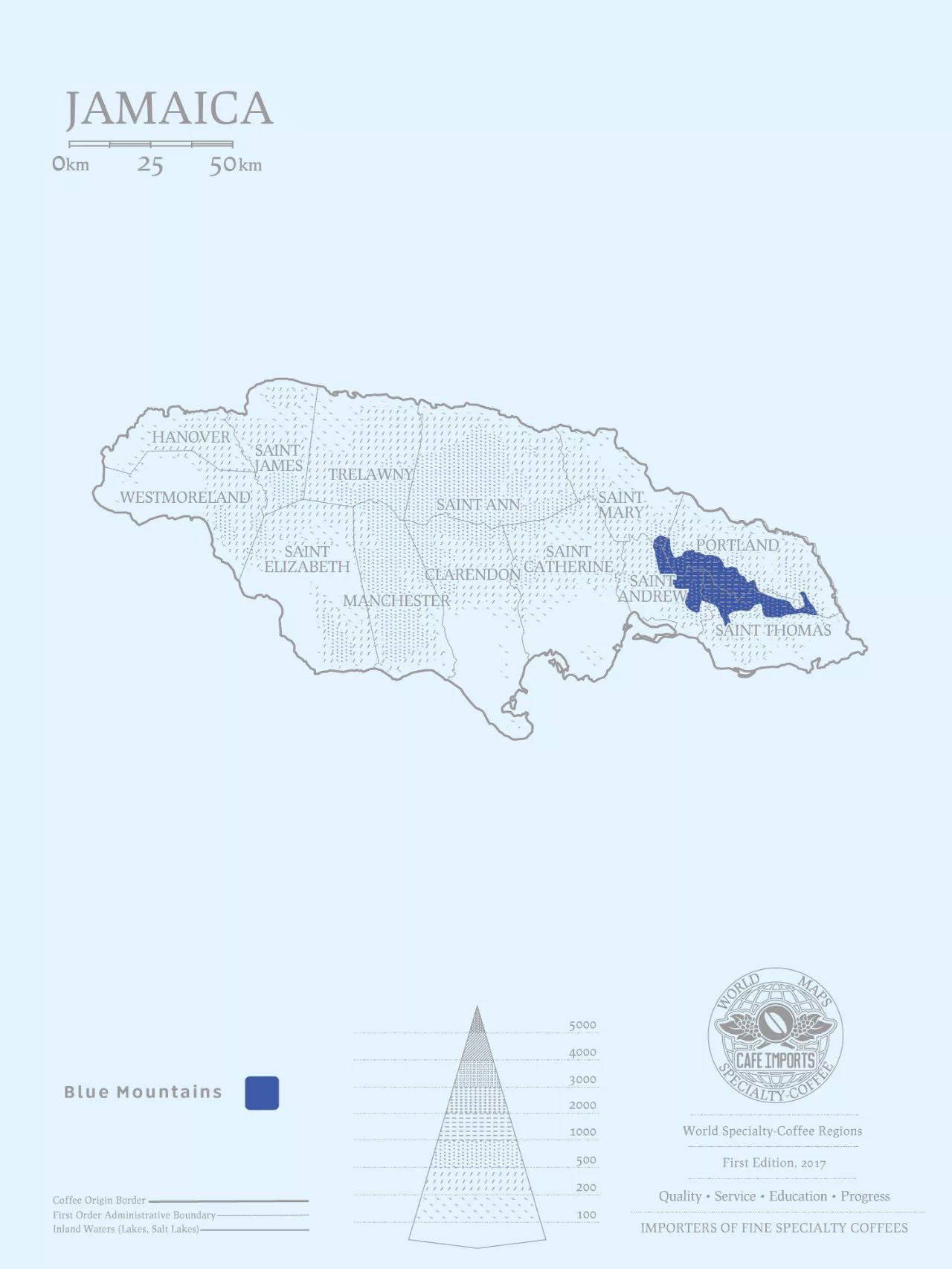
According to Qianjie, the real Blue Mountain Coffee refers to the coffee brewed by coffee beans from the Blue Mountains of Jamaica. According to the grade, it is divided into Jamaica Blue Mountain Coffee and Jamaican Alpine Coffee. The Blue Mountains are located in Jamaica, with the highest peak of 2256 meters above sea level, which is the highest peak in the Caribbean. It is located in the earthquake zone, with fertile volcanic soil, fresh air, no pollution, humid climate, foggy and rainy all the year round, which makes the world-famous Jamaica Blue Mountain Coffee.
At the same time, Blue Mountain Coffee has all the characteristics of good coffee, not only full-bodied and mellow, but also because of the perfect combination of sweet, sour and bitter coffee, so it has no bitter taste at all, only a moderate and perfect sour taste. That's why it can be one of the most expensive coffee in the world.
This has led to the emergence of a lot of fake Blue Mountain coffee on the market, so how to identify it? In front of the street, let's give popular science to coffee fans:
1, appearance: the raw beans of Blue Mountain Coffee are cyan, the appearance is very neat, the size is medium to small, the ends are warped up, the volume increases a lot after baking, very full.
2, grinding beans: the real blue mountain coffee beans grow at high altitude, its cytoplasmic structure is relatively loose, when grinding by hand, it feels very crisp, cool and continuous, and there is no feeling of resistance.
3, aroma: the aroma is very rich and dense; the so-called blended Blue Mountain Coffee does not have this aroma.
4, taste: the real Blue Mountain Coffee has a balanced and full-bodied taste, without any feeling of prominence or lack of taste, which is unmatched by any other coffee beans, the most critical identification point.
But as far as Qianjie knows, not all coffee grown in the Blue Mountains can be called Blue Mountain Coffee, because according to CIB (Certified International Barista International registered barista), only coffee grown above 1000 meters above sea level is called Jamaican Blue Mountain Coffee. The opposing coffee produced below 1000 meters in the Blue Mountain area of Jamaica is called Alpine Coffee, which is second only to Blue Mountain Coffee in quality, and is called the brother variety of Blue Mountain Coffee by industry insiders.
Of course, the reason why Blue Mountain coffee is expensive is not only because of its low production, but also because 90% of Blue Mountain coffee is bought by the Japanese. Since the rest of the world can only get 10% of Blue Mountain, regardless of the price, Blue Mountain coffee is always in short supply.
According to Qianjie, it is understood that the reason why Blue Mountain Coffee can maintain its top status today is also closely related to the local management policy. The story begins in 1932, when Jamaica reduced the island's dependence on sugar exports by encouraging coffee production. Therefore, the local government does not like most coffee producing countries, in order to increase the output value, a large number of high-quality coffee is planted, and the quality is superior, preferring to sacrifice the output, but also to ensure the quality. Therefore, Jamaica is one of the countries with low coffee production in the world. For example, Brazil, the world's largest coffee exporter, produces 30 million bags of coffee a year, while Blue Mountain coffee produces only about 40, 000 bags a year.
The variety of Jamaican Blue Mountain Coffee is Typica, one of the oldest Arabica tree species found today. it was found in Ethiopia. According to Qianjie, it spread to the Blue Mountains because King Louis XV of France ordered the cultivation of coffee in Jamaica in 1717, and by the mid-1920s. The governor of Jamaica, Sir Nicholas Loyce, imported Arabica seeds from Martinique, Martinique, and began to plant them in the St. Andrews area.
A few years ago, Blue Mountain Coffee has always been treated with water to treat coffee cherries, in order to retain the original coffee cherry flavor, but with the emergence of rose summer varieties and Yega Chuefei, it has caused a certain blow to Blue Mountain Coffee. So Clifton also began to try to use sun treatment to treat blue mountain coffee cherries, but due to rainy and foggy climate and environmental problems This is also a big challenge for Clifton, but they still meet the difficulties and do it, which has to be admired by Qianjie, so Qianjie certainly can't fall behind. Next, Qianjie will test and cook through a cup to see the difference between the flavor of washed Blue Mountain and Sun Blue Mountain.
First of all, Qianjie chose Blue Mountain Coffee, which is also from Clifton Manor.
Clifton Manor has a long history. It began to grow Blue Mountain Coffee Cherry in the mid-18th century. It is also the oldest and highest coffee estate in the Blue Mountain. It is the only local manor that produces Blue Mountain Coffee and is certified by the Rainforest Alliance.
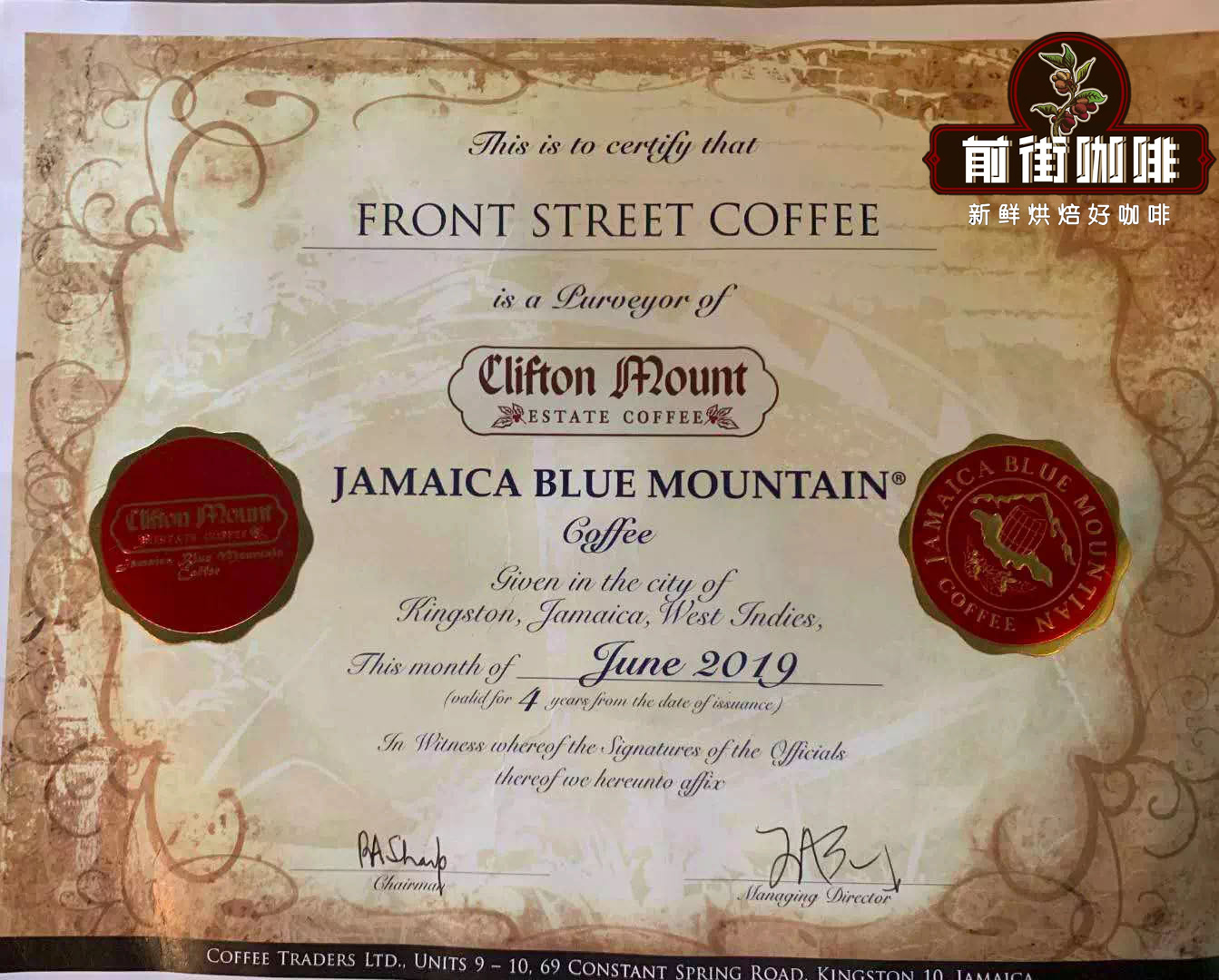
The significance of Rainforest Alliance certification is as follows
According to the concept of rainforest alliance, with the purpose of protecting the ecological environment, ensuring the sustainable development of agriculture, developing and producing safe and high-quality tea, and enhancing market competitiveness are of great significance to increase export earnings and the income of tea farmers and workers. Front Street Coffee Jamaica Blue Mountain Coffee Clifton Manor is the oldest coffee farm in Jamaica and only Clifton Farm in Jamaica has the "(RFA) Rainforest Water Frog" logo. The Blue Mountain area is a small area with a planting area of only 6000 hectares, and it is impossible to grow all the coffee marked "Blue Mountain" there. Today's Clifton Farm is the largest estate in the area and is also a small-scale plantation by international standards, many of which are small landowners whose families have been working on the land for two centuries.
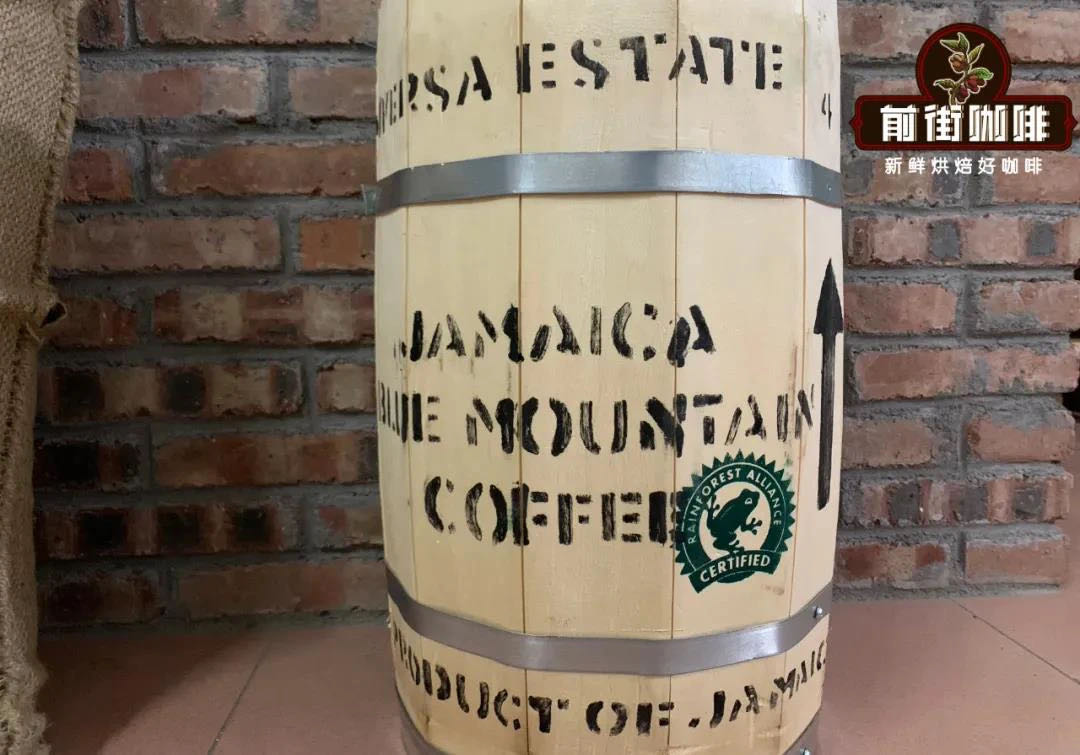
According to Qianjie, the rainforest alliance certified representative of the crop must meet the following points:
1. Less water pollution
two。 Less acid damage
3. Reduce the impact on the environment and human health
4. Protect wildlife habitat
5. Less waste
6. Use less water
7. Highly effective agricultural garden management mechanism
8. Protect the rights and interests and welfare of agricultural workers
9. Ensuring the income and competitiveness of agricultural workers
10. Enhance the cooperation between agricultural workers and environmentalists.
These are the reasons why Qianjie Club chose the Blue Hills of Clifton Manor to bring to the coffee fans on Qianjie.
Front street coffee Jamaica washed blue mountain coffee beans
Country: Jamaica
Producing area: blue Mountain (Clifton Manor)
Altitude: 1310m
Variety: iron pickup
Treatment: washing treatment
Flavor: sweet brown sugar and sour berries on the palate, with nutty cocoa in the middle and back, creamy and layered, with walnut aromas in the finish.
Front street coffee Jamaica sun blue mountain coffee beans
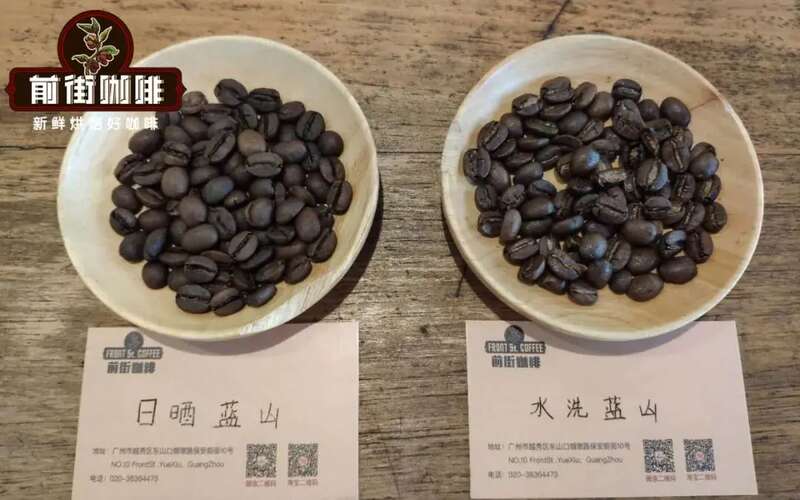
Country: Jamaica
Producing area: blue Mountain (Clifton Manor)
Altitude: 1310m
Variety: iron pickup
Treatment: washing treatment
Flavor: the entrance has dark chocolate, nutty flavor, high cleanliness, very bright, good mellow thickness, sweet and sour balance.
Conclusion: compared with the two blue mountains, Qianjie thinks that the flavor of the sun blue mountain is stronger, and the sweet and sour quality gives people a very comfortable feeling, while the washing blue mountain keeps the unique taste of the classic blue mountain as always. The taste is smooth, bright and mellow, as well as a balanced flavor of bitterness and bitterness.
Thus it can be seen that the same coffee cherry washing treatment and sun treatment will also lead to a difference in flavor, then there must be coffee fans curious about how to operate these two treatments. In front of the street, this will give you the process of popular science. Sun treatment
Tanning is the oldest and most primitive treatment of coffee beans. Arabs used this method to deal with coffee more than a thousand years ago. The harvested coffee cherries are directly exposed to the sun on the terrace (about 27-30 days), and the moisture content is changed from 60% to only 12%. The concept of this treatment is very simple and inexpensive, but it has a lot of variables and risks; it has been used for a long time to deal with beans that are not of such good quality.
Of course, this is an ancient method, and of course, in the new era, there will be a new type of sun treatment, that is, exquisite sun treatment, such as the modern estates in the Blue Mountains and Pokuit areas. first of all, strict red fruit screening is carried out after picking, the overripe, immature and bad fruits are screened, and the screened coffee fruits are laid flat on the viaduct for drying. In the drying process, there will be managers to turn over to avoid uneven sun. When the moisture content of the coffee is reduced to about 12%, the coffee is dried, shelled and polished, stored and ready for export.
Washing treatment method
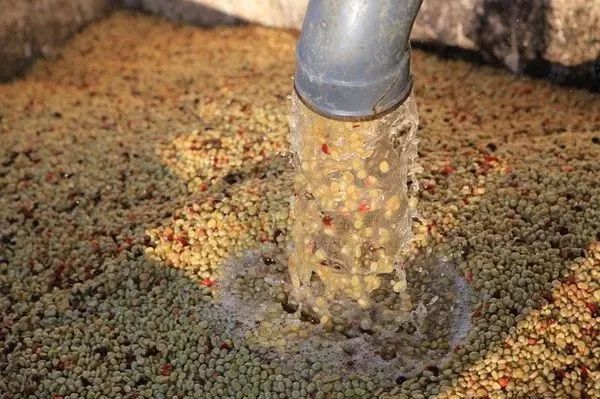
Washing is a technique invented by the Dutch in the 18th century to separate most of the pulp from the coffee beans by a peeling machine, then guide the shelled beans to a clean sink and soak them in water for fermentation to completely remove the residual pulp layer. Through water treatment, unripe beans and defective beans are selected because of buoyancy, and then peeled, also called beating, is used to remove the peel of the coffee fruit through a machine, and the rest of the coffee with pectin is put into the fermentation tank to ferment for 1 to 2 days to decompose the pectin attached to the coffee beans. Then wash the coffee beans with clean water and dry the raw beans with sheepskin until the moisture content reaches 12% and remove the sheepskin when it is exported.
The above is what Qianjie knows about Jamaican Blue Mountain Coffee. I believe coffee fans also have a better understanding of Jamaican Blue Mountain Coffee.
For more boutique coffee beans, please add private Qianjie coffee on Wechat. WeChat account: kaixinguoguo0925
Important Notice :
前街咖啡 FrontStreet Coffee has moved to new addredd:
FrontStreet Coffee Address: 315,Donghua East Road,GuangZhou
Tel:020 38364473
- Prev
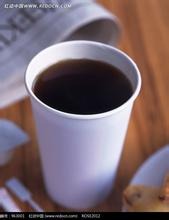
Introduction to the flavor and taste of Ethiopian boutique coffee beans
Coffee is Ethiopia's most important export cash crop and the main source of Ethiopia's foreign exchange earnings. Ethiopia's coffee exports account for about 3% of the world market, making it the eighth largest coffee exporter in the world. Coffee exports increased steadily from 58000 tons in 1990 to 110000 tons in 1995-1996 and remained at this level in the following years. 2001-2002
- Next
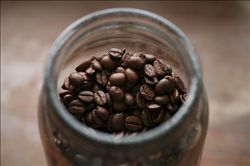
Introduction to the flavor and taste of Panamanian boutique Rosa coffee
In 1996, Blaise and Rachel visited a farm for sale in the Haramijun area of the Bocketi Valley, and was attracted by the beautiful farm and immediately bought it. This is Esmeralda. Daniel Lou, the third son of Haramiqiong Farm. It is in this farm that Mr. Bidasson has grown Geisha coffee that attracts the attention of the coffee world. Geisha pronunciation is the same as Japanese.
Related
- Detailed explanation of Jadeite planting Land in Panamanian Jadeite Manor introduction to the grading system of Jadeite competitive bidding, Red bid, Green bid and Rose Summer
- Story of Coffee planting in Brenka region of Costa Rica Stonehenge Manor anaerobic heavy honey treatment of flavor mouth
- What's on the barrel of Blue Mountain Coffee beans?
- Can American coffee also pull flowers? How to use hot American style to pull out a good-looking pattern?
- Can you make a cold extract with coffee beans? What is the right proportion for cold-extracted coffee formula?
- Indonesian PWN Gold Mandrine Coffee Origin Features Flavor How to Chong? Mandolin coffee is American.
- A brief introduction to the flavor characteristics of Brazilian yellow bourbon coffee beans
- What is the effect of different water quality on the flavor of cold-extracted coffee? What kind of water is best for brewing coffee?
- Why do you think of Rose Summer whenever you mention Panamanian coffee?
- Introduction to the characteristics of authentic blue mountain coffee bean producing areas? What is the CIB Coffee Authority in Jamaica?

